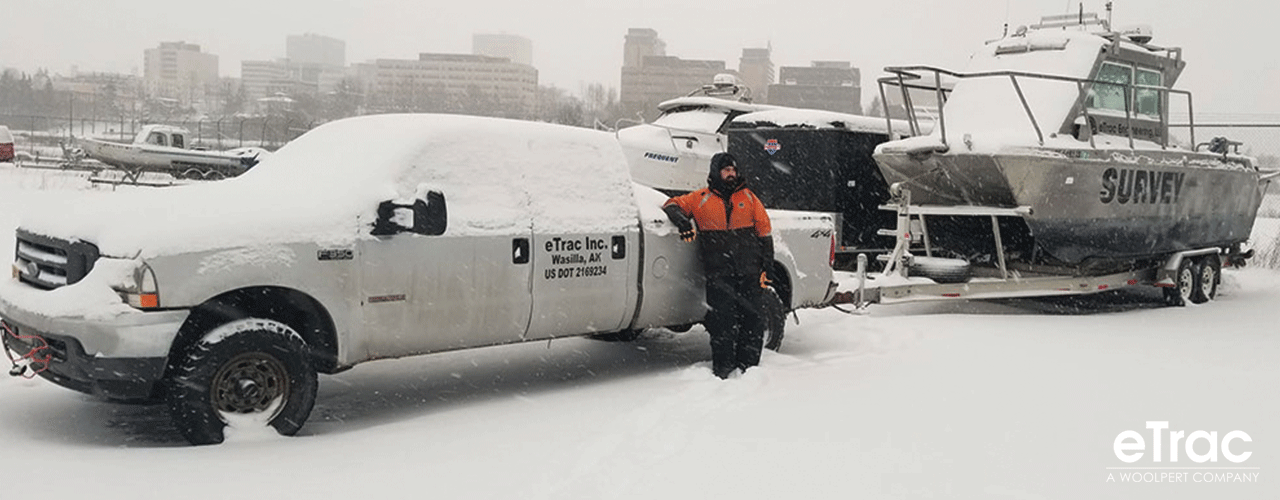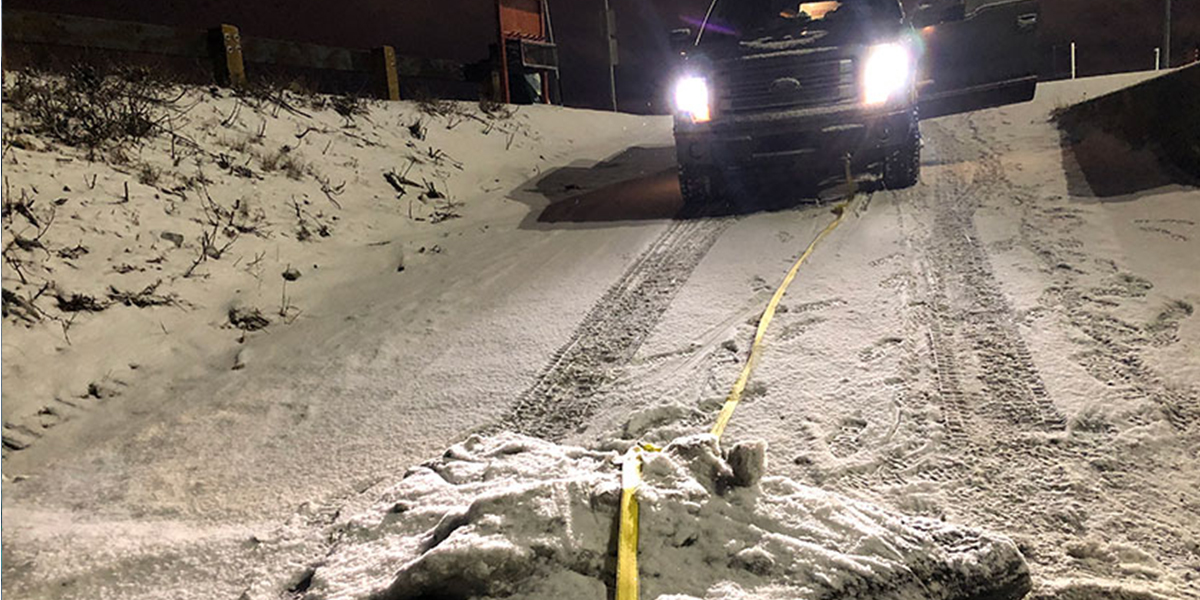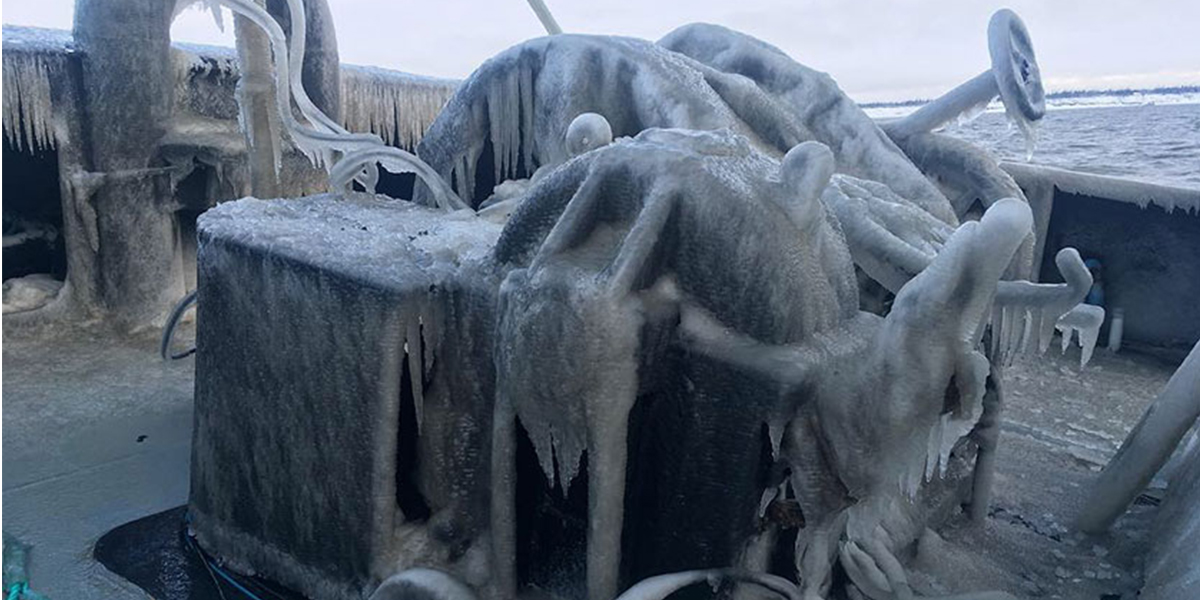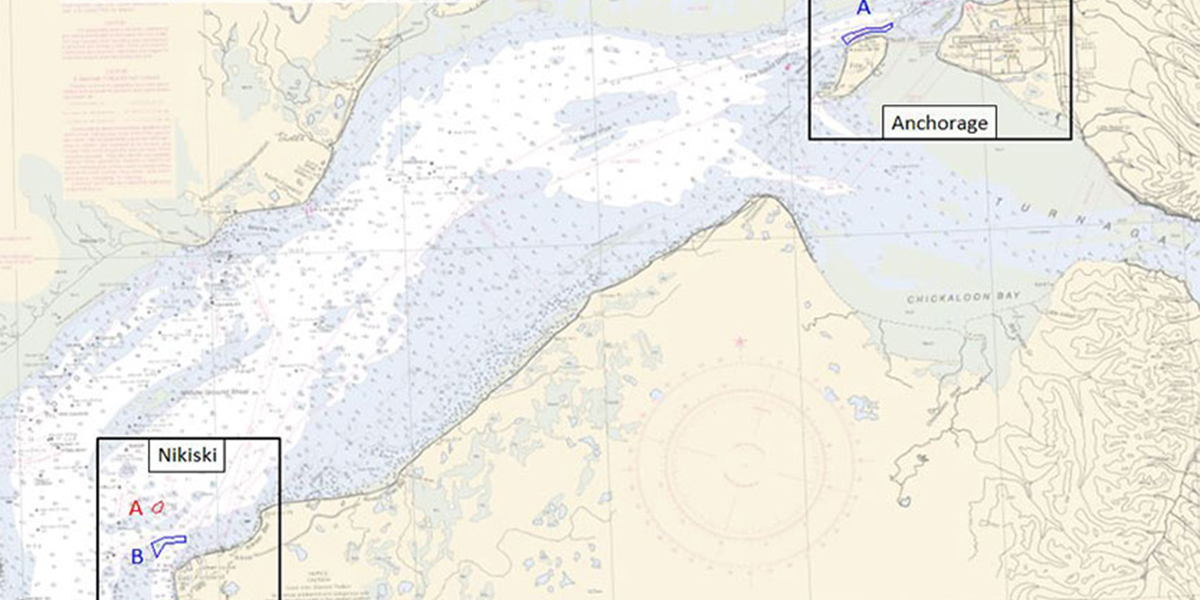Emergency Earthquake Response Multibeam Hydrographic Surveys for NOAA

On November 30th, 2018, south central Alaska experienced a magnitude 7.0 earthquake, the epicenter being only 15 miles from the Woolpert Wasilla, AK office and the Port of Alaska. Following the earthquake, NOAA awarded Woolpert the ninth task order under their current NOAA contract. This task order included seven areas of complete coverage and object detection multibeam hydrographic surveys, spanning the distance between Anchorage and Kenai, AK. Given the emergency nature of the survey, Woolpert quickly mobilized vessels for data collection within two days after the task order was awarded. Woolpert mapped all seven areas over the course of nine days in two separate field efforts while conducting 24-hour survey operations.
For the first phase of the survey area, Woolpert mobilized the 25 ft. catamaran survey vessel for 24-hour operations close to Anchorage and Fire Island. The 24-hour operations were necessary to beat the inevitable ice that moves into Anchorage every winter. The Woolpert team completed the Anchorage surveys within five days just as the ice began forming in the inlet. The second phase of the project was completed using a separate survey vessel. Due to the safety hazard of the ice, Woolpert also mobilized a 60 ft. tug with an ice grade hull and permanent sonar moon pool.
This task order involved complex planning and mitigation of environmental hazards. Within two weeks of the earthquake, ice had fully congested the upper Cook Inlet from Anchorage to Fire Island. The tug survey vessel has an ice rated hull and was subcontracted to operate once the sheets of ice had solidified within the area. Adding to the logistics of large areas of ice, weather in lower Cook Inlet by the Kenai River entrance is erratic. Tidal swings are approximately 30 ft., and currents regularly run up to 10 knots.
Two survey areas were located offshore of Nikiski, AK, which is geographically located in an area named the “forelands.” This is a pinch point within Cook Inlet where the gap narrows on each side and creates a funnel that makes working conditions complex and challenging. With below freezing temperatures and heavy seas, freezing sea spray covered the boat and survey equipment, resulting in 24-hour maintenance and safety mitigation.
This is the first task order where the data collection and processing teams were not shore side during data collection for the entirety of the survey. During data collection in Anchorage, data hand overs occurred during crew changes every high tide. The data was then immediately transferred via FTP to the California remote processing office where data went through the processing pipeline. Due to the limitations of only having bunk space for two surveyors on the tug and limited internet access, the acquisition surveyors in Kenai also acted as a mobile processing team when each surveyor was not standing during an acquisition shift. By processing the data through the detailed processing pipeline complete with survey area QA/QC checks, the surveyors verified that NOAA charting specifications had been met before leaving an area and travelling to the next site, which could take up to six hours.
Client
National Oceanic and Atmospheric Administration (NOAA)
Location
South Central AK


